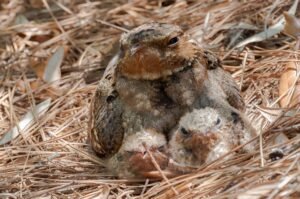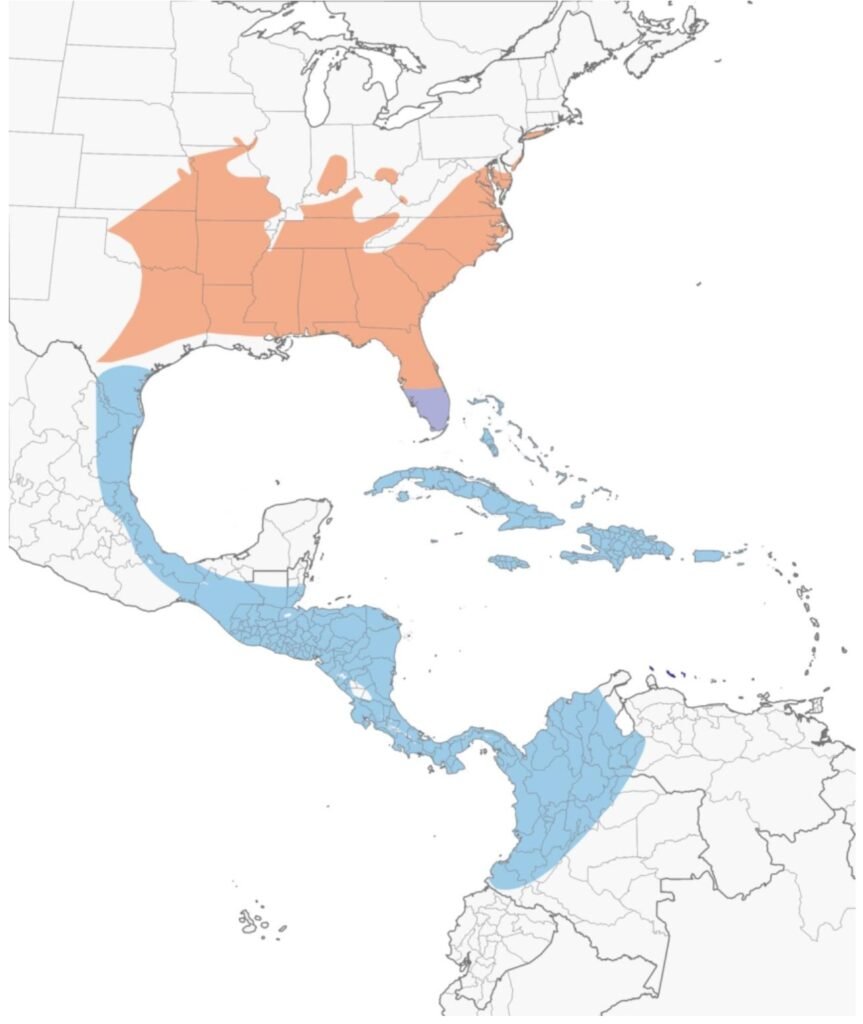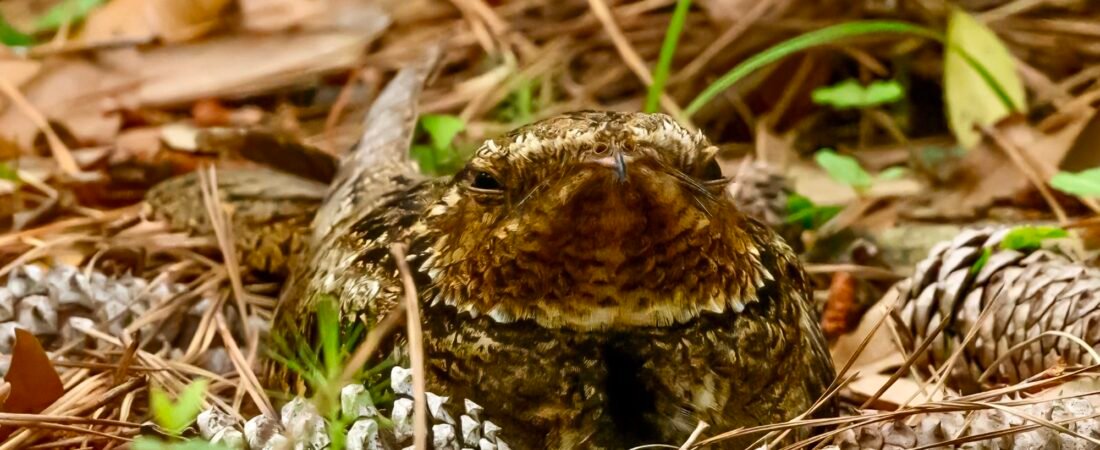The Chuck-will’s widow has mottled brown plumage with a buff throat. It features reddish-brown feathers lined with black, and its head and chest display brown and white patterning. Males have distinctive white patches on their outer tail feathers. This bird has a short bill and a long tail, typical of nightjars. You are probably hearing the Chuck-will’s Widow song right now in the morning or all night long. If you are lucky and have a keen eye, by day they can be found resting motionless on the ground or on a horizontal branch.
Chuck-will’s-widows catch flying insects at night. They eat mainly moths, beetles and dragonflies. Very occasionally, they have been seen eating birds such as Hooded, Palm, Yellow, and Cape May Warblers, Common Yellowthroat, Swamp Sparrow, Carolina Wren, Cuban Emerald (a hummingbird), as well as bats.
Chuck-will’s-widows don’t build nests; they simply lay their eggs on the ground among dead leaves, pine needles, or bare dirt. Incubating adults are incredibly well camouflaged and virtually invisible unless you nearly step on them. In the picture above, this chucks-will’s widow is sitting on a nest. She was just found recently on Seabrook Island Road at a private residence.
| Clutch Size: | 1-4 eggs |
| Number of Broods: | 1 brood |
| Egg Length: | 1.3-1.6 in (3.3-4 cm) |
| Egg Width: | 0.9-1.1 in (2.3-2.8 cm) |
| Incubation Period: | 20-21 days |
| Nestling Period: | 16-17 days |
| Egg Description: | White to gray, with variable dark markings. |
| Condition at Hatching: | Weak but with eyes open, covered in long, light-brown down, able to walk. |

This species is often mistaken for a similar species called the Whip-poor-will. Their songs are very similar, but they are a much smaller, grayer bird. Whip-poor-wills can also be found in eastern Forests.
Chuck-will’s Widow has a low conservation concern.

Article submitted by: Melanie Jerome
Photographs provided by: Gina Sanders
This blog post is part of a series SIB will publish on a regular basis to feature birds seen in the area, both migratory and permanent residents. When possible we will use photographs taken by our members. Please let us know if you have any special requests of birds you would like to learn more about.

